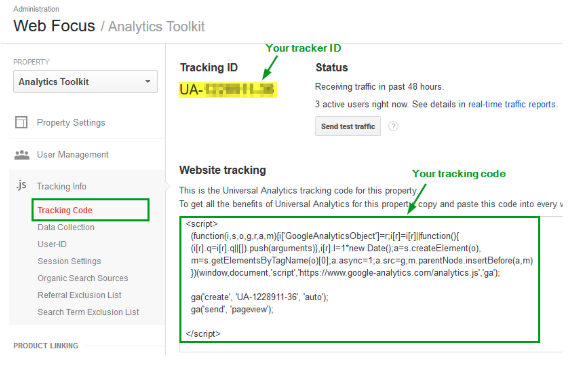The Of Google Analytics Event Tracking
Wiki Article
Google Analytics Event Tracking Fundamentals Explained
Table of ContentsSome Known Incorrect Statements About Google Analytics Event Tracking The Single Strategy To Use For Google Analytics Event TrackingWhat Does Google Analytics Event Tracking Mean?Getting My Google Analytics Event Tracking To WorkAll About Google Analytics Event TrackingTop Guidelines Of Google Analytics Event Tracking

If you're mosting likely to establish event tracking by hand, then you're mosting likely to have to include some added code to the aspects you desire to gather information from. The code you're going to collaborate with will look something similar to this: There are four parts within that code snippet that you're mosting likely to require to define on your own: event, Group, event, Action, event, Tag and event, Worth.
As you can see, two of these are required (category and activity) while label and worth are optional. It all relies on the type of information you desire relayed back to Google Analytics when an individual clicks on the specified component (Google Analytics Event Tracking). It will be a lot easier to specify these components if you analyse your internet site and decide which elements/actions you want to track
The Ultimate Guide To Google Analytics Event Tracking
Now, you'll be asked to specify the and and you'll intend to pick from the drop-down food selection that shows up when you click. This will certainly bring up the same event monitoring parts we considered earlier, which you'll require to fill in. Once you've specified these, you can relocate to the second box and select the trigger that will fire your tag.On the next display, you'll additionally have an area for naming your trigger and, if you click on package, you'll see a checklist of the various triggers you can choose. In this case, we want to choose and then select the alternative listed below. You'll establish the trigger to only fire when an aspect is clicked with a Link that consists of the.
Every web site talks. Before data analytics, we could not hear the voices of our websites. Yet exactly how do you understand what your website is claiming? Basic - Event monitoring! Occasion monitoring provides you a photo of just how individuals Homepage engage with your website and business (Google Analytics Event Tracking). Do you would like to know more? Check out on as we discover whatever you require to know, including what it is, why you must track occasions, just how to handle occasions data, and various other pertinent FAQs you might have.
The Single Strategy To Use For Google Analytics Event Tracking
You click to investigate can change between your event classifications, activities, and tags in the Top Events report. The Occasion Pages report shows the pages where events are set off.It shows you the path they take as they move from one event to the next and assists you to establish which web content involves your target market the a lot of. Occasions in Google Analytics have 4 major components. They are additionally a part of the occasion tracking code. Google Analytics uses these codes to track customer interactions and group them into event records.
Then, select "Variables" > "Configure". A listing of the parameters you can track on your internet site is on the. Under Clicks, Forms, and Video clips, double-check each parameter. After inspecting all necessary areas, you can click "X" to close the home window and return to the Introduction menu useful reference left wing.
Getting The Google Analytics Event Tracking To Work

Choosing "False" will certainly protect against that session from being a bounce. If you haven't done so, you may need to establish a variable in the Google Analytics Setups box. Click "New Variable ..." if you can not locate one to choose. After this, enter your GA tracking ID in the Tracking ID field.
Your ID will certainly get on top of the display. To do this, adhere to the next series of activities: After configuring the areas, pick the "Triggering" area. When configuring your brand-new trigger, click the "+" switch, after that the "pencil" switch, after that select your trigger kind. Label your trigger and specify the conditions that cause activate shooting.
4 Simple Techniques For Google Analytics Event Tracking

When it familiarizes which sections and components are directing consumers with your conversion funnel, you still will not understand. So, without event monitoring, GA reports will only count gos to as single-page sessions, even if customers invest a great deal of time on one page and involve with it significantly (and a bounce).
Just how does event tracking attain this?Single-page sessions recognized as bounces start and conclude on the exact same web page. Without event monitoring, GA will certainly classify an individual's go to as a bounce if they do not navigate to an additional page, no matter of exactly how they connect with it. A video-rich web page can have a higher bounce rate if occasions are not tracked.
The Ultimate Guide To Google Analytics Event Tracking
For GA to take occasion hits into account when measuring bounce rates, you have to choose "Non-interaction event" as "False" throughout the GTM arrangement. Establishing "occasion goals" with event action is an outstanding method to keep track of individual tasks you value highly, such as brand-new lead entries or click a phone call to activity.Report this wiki page